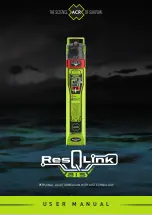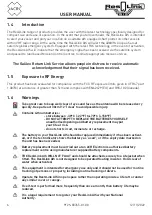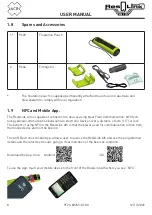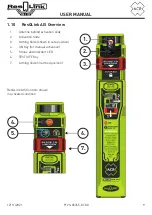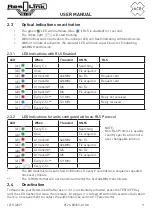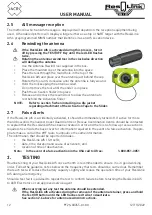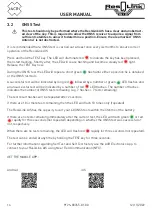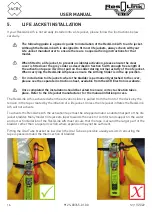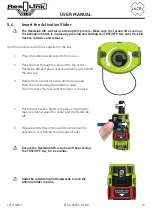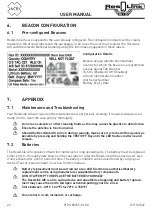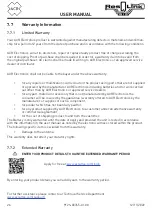
USER MANUAL
14
912S-03765-01.00 12/11/2022
3.2
GNSS Test
!
This test should only be performed where the ResQLink AIS has a clear and unobstruct-
ed view of the sky. This is required to allow the GNSS receiver to acquire a signal from
sufficient satellites to allow it to determine a position. Ensure the area marked “GNSS
Antenna” is not obstructed.
It is recommended that a GNSS test is carried out at least once every six months to ensure correct
operation of the ResQLink AIS.
Press and hold the TEST key. The LED will illuminate red
to indicate the key has been pressed,
then start flashing. Shortly after, the LED will cease flashing and become a steady red
light.
Release the TEST Key now.
During the GNSS test the LED will repeat a short green
flash until either a position fix is obtained
or the GNSS test fails.
A successful test will be indicated by long red
followed by a number of green
LED flashes and
an unsuccessful test will be indicated by a number of red
LED flashes. The number of flashes
indicates the number of GNSS tests remaining (e.g. 7 flashes = 7 tests remaining).
The test result flashes will be repeated after 2 seconds.
If there are 10 or more tests remaining then the LED will flash 10 times only (repeated).
The ResQLink AIS has the capacity to carry out 60 GNSS tests within the lifetime of the battery.
If there are no tests remaining immediately after the current test, the LED will flash green
or red
rapidly for three seconds (not repeated) depending on whether the GNSS test was successful or
not, respectively.
When there are no tests remaining, the LED will flash red
rapidly for three seconds (not repeated).
The test can be ended at any time by holding the TEST key for three seconds.
For further information regarding Self Test and Self Test history use the ACR Electronics App. to
connect to your ResQLink AIS using Near Field Communication (NFC).
GET THE MOBILE APP.:
Android
iOS

